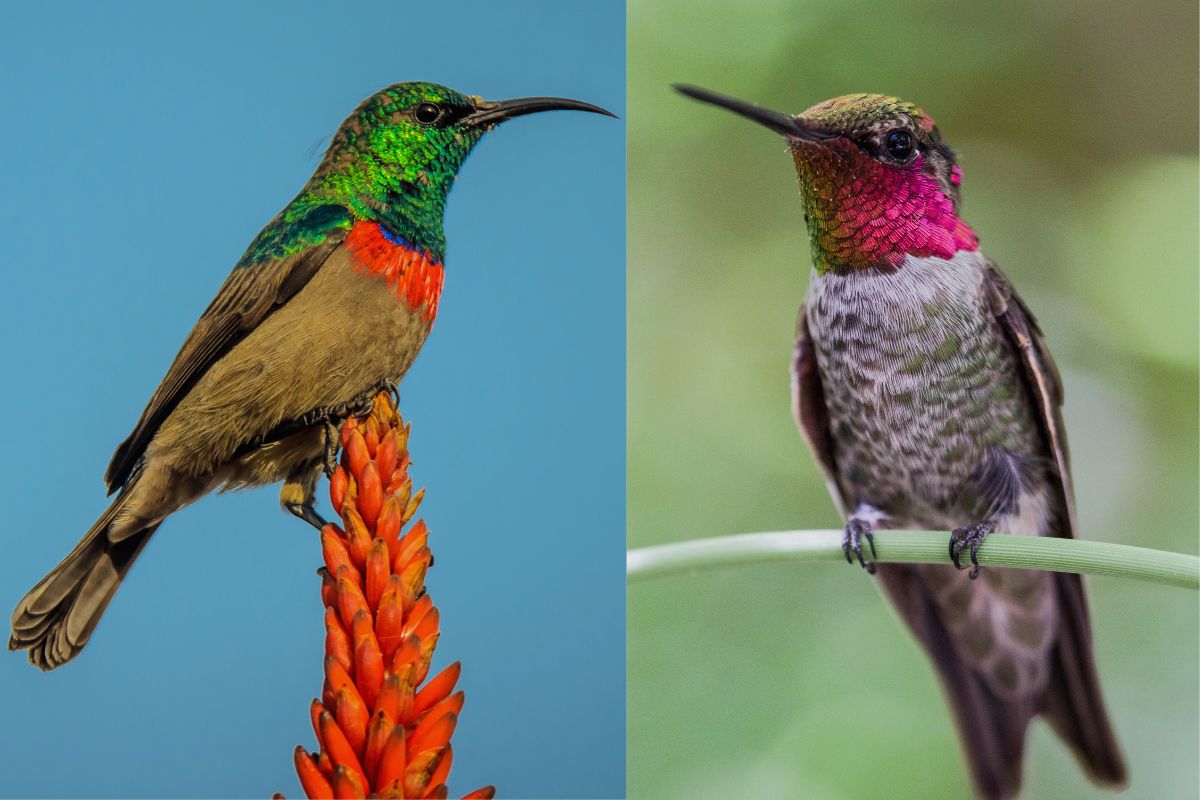Sunbirds in Thailand: A Fascinating Alternative to Hummingbirds
Discover the captivating world of sunbirds in Thailand, a unique and vibrant species that shares similarities with hummingbirds. In this article, we will explore the diverse species of sunbirds found in Thailand, their behaviors, habitats, and their crucial role in the country’s ecosystems. Join us as we delve into the mesmerizing world of Thailand’s sunbird species.
Sunbirds: Thailand’s Resemblance to Hummingbirds
Sunbirds, belonging to the Nectariniidae family, can be found in Africa, Asia, and the Pacific Islands. Although they are not closely related to hummingbirds, sunbirds exhibit similar characteristics such as vibrant plumage, feeding habits, and ecological roles. Thailand is home to various sunbird species, including the Olive-backed Sunbird, Purple Sunbird, Crimson Sunbird, and Brown-throated Sunbird. Each species showcases unique features and brilliant colors, making them a joy to observe and admire.
Habitats and Regions: Exploring Sunbirds in Thailand
Tropical Forests and Gardens
Sunbirds in Thailand are commonly found in tropical rainforests, where they feed on the nectar of brightly colored flowers. They are also attracted to gardens with nectar-rich plants, which provide them with the energy needed to sustain their high metabolism.
Lowland and Montane Forests
Thai sunbirds inhabit a variety of habitats, ranging from lowland forests to montane forests at higher elevations. Their distribution varies depending on the species, but they are generally widespread across the country.
Captivating Behaviors of Thai Sunbirds
Perching and Feeding
While sunbirds cannot hover like hummingbirds, they are skilled at feeding on nectar. They typically perch on nearby branches and extend their slender bills to reach flowers, sipping nectar while occasionally hovering briefly.
Mating Displays and Territoriality
During the breeding season, male sunbirds perform elaborate displays to attract females. They may also engage in aggressive behavior to protect their territories and food resources from other sunbirds or intruders.
The Importance of Sunbirds in Thailand’s Ecosystem
Pollination
As sunbirds feed on nectar, they inadvertently transfer pollen from one flower to another, playing a crucial role in plant reproduction. Their pollination services help maintain the diversity and health of Thai ecosystems, supporting the growth of various plant species.
Food Chain
Sunbirds are essential components of the food chain in Thailand. As small and agile creatures, they serve as prey for larger predators such as birds of prey, snakes, and spiders. Their presence contributes to the delicate balance of Thailand’s ecosystems.
Experiencing the Beauty of Thai Sunbirds
Guided Tours
Embark on a guided tour to witness the enchanting world of Thai sunbirds. Numerous birdwatching tours are available in Thailand, allowing you to explore sunbird habitats and gain a deeper understanding of these fascinating creatures.
Creating a Sunbird-friendly Garden
If you reside in Thailand or plan to visit for an extended period, consider establishing a sunbird-friendly garden. By planting nectar-rich flowers and providing suitable perching spots, you can create a haven for sunbirds and enjoy their beauty up close.
Conclusion
While Thailand may not be home to hummingbirds, the presence of sunbirds adds vibrancy and wonder to the country’s landscapes. Understanding the captivating behaviors and ecological importance of these birds emphasizes the need to preserve biodiversity and maintain healthy environments. Thai sunbirds not only contribute to the region’s visual appeal but also play vital roles as pollinators and components of the food chain.
As we appreciate the beauty and grace of sunbirds, let us also recognize our responsibility as stewards of the environment. By fostering a deeper appreciation for the natural world and taking concrete steps to protect our surroundings, we can ensure the continued thriving of these enchanting creatures for generations to come.
